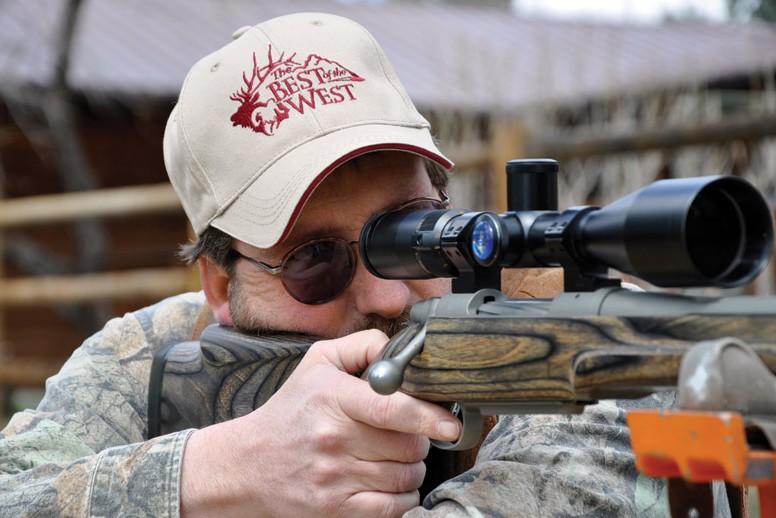Tips and tactics from expert John Porter
Advertisement
Four years ago, footage of astounding long-range shots showing animals killed at 800 yards and beyond appeared on the Internet. The clip was a trailer for a DVD produced by the U.S. hunting TV show The Best of the West. Critics were quick to propose that for every quick clean kill, there were no doubt a substantial number of wounded and lost animals. The man at the centre of the controversy taking the shots? Lifelong competition shooter John Porter, owner and operator of Wyoming’s Morning Creek Outfitters.
Q: Why consider long-range shooting for hunting?
A: Terrain makes hunting the mountains difficult at the best of times. Often you may be 600 yards away from your ram straight across a canyon with no way to get closer without spooking the animal. It’s just simpler to lay down on the pack and calmly make the shot. Add to that, it takes 14 or more years to draw a bighorn tag in Wyoming. Most people start later in life, usually in their forties, when they have the money and wherewithal to do outfitted hunts. Add 14 years and these guys are in their mid-50s at least, and not many are in mountain condition. For many of these hunters, a long-range shot is the only way to close the deal.
Advertisement
Q: How do you know a hunter is capable of the shot?
A: I take all my clients to the range before we hit the trails. I have them shoot their rifle at 100 yards, and my rifle at 500 yards. I learn their limits and coach them if they need it.
Q: What’s the first tip you give when you’re coaching?
A: I always start with dry-firing the rifle until they can keep the crosshairs on target after the trigger breaks. This follow-through is critical for making the shot. Making sure the rifle is allowed to recoil freely, and that they aren’t canting the rifle, is crucial on longer shots.
Q: Could you talk me through a shot?
A: Well, I’m going to know from the range work if you can shoot the distance, so the next step is to get a perfect rest for the shot that supports the rifle front and back. I’ll dial in the correct yardage elevation on the Huskemaw scope. Then I’ll have you dry-fire my rifle, maybe 30 times until you have it down cold. We’ll wait for the perfect shot and I’ll keep you focused all the time. I might make you eat your lunch before the shot. Some guys shoot better if they’re a little cranky with me; it helps override the jitters. If I still don’t think you’re ready, I’ll range a stump near the animal and have you shoot it. Most of my guns have muzzle brakes and the ram won’t figure out where the noise came from. It’s a big confidence builder to smack the stump and prove to yourself you have what it takes to make the shot.
Advertisement
Q: Some say long-range shots are unethical. Your reply?
A: The numbers don’t lie. When the animal is 500 to 600 yards away, my hunters’ success rates are 90 to 95 per cent. I have time and can control the variables and the pace of the situation and help my hunter. Up close, the encounters tend to happen fast and I have no chance to talk to my hunter to get him calm and focused. The situation is largely out of my control and the rates plummet to a 60 to 70 per cent success rate.
Q: Any tips for hunters keen on long-range shooting?
A: High-quality gear is accessible to everyone today. Choose a cartridge with recoil you can handle. Forget about muzzle velocity. What’s important is percentage of retained velocity at 600 yards. Practise, learn your limits and stay within them. Remember that shot placement trumps bullet size every single day.

